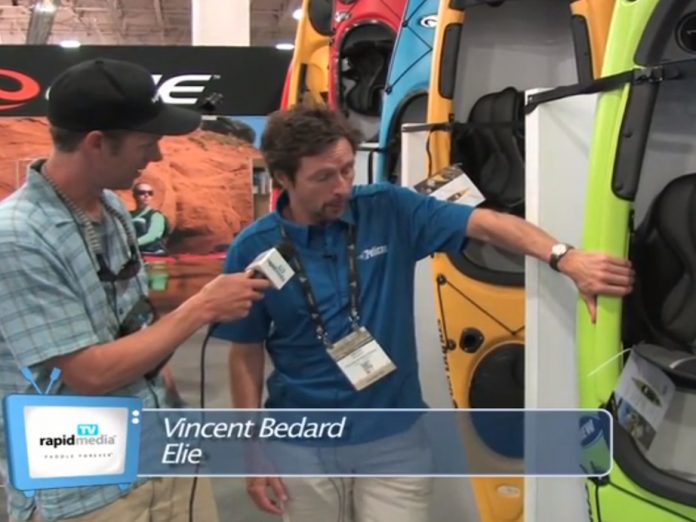Bill Kueper of Current Designs talks to Rapid Media’s Scott MacGregor about the new colours and new the option to have either a rudder or skeg on the Current Designs Vision series. This just might be the kayak you’ve been looking for. Watch it now.
VIDEO: New Options from Current Designs
Kevin Callan Ice Bucket Challenge
The Happy Camper was challenged by Chris Johnson and Alan Drummond for the ALS Ice Bucket Challenge. He took the challenge – and wish he didn’t.
VIDEO: Kayak and Caribou
“The Slate Islands off the coast of Lake Superior Canada are home to the largest concentration of woodland caribou in Ontario. Not only is it interesting to see caribou in the wild, it’s also an amazing place for sea kayaking. With high sea cliffs, hiking trails, a lighthouse and interior waterways to explore, the Slates are one of the premier destinations in Ontario to visit. We took a guided tour with Naturally Superior Adventures and here is what you can expect!”
For more information or to plan a trip of your own, visit the website of Ontario Travel and Algoma Country.
How To Pack For Self-Support Kayak Trips
Multi–day whitewater kayaking trips are a rewarding way to experience a new river or a remote area of your local watershed. Packing for an expedition is important for both safety and comfort. Knowing what to pack is crucial. But less commonly discussed is how to pack all your gear inside your boat.
Aniol Serrasolses has spent a lot of time on remote rivers, living out of his kayak. His packing philosophy will help you paddle confidently and camp comfortably in the backcountry.
BE ORGANIZED
Pack your kayak in your backyard, prior to arrival at the put-in. Serrasolses suggests laying all your gear out, and organizing it with weight in mind—divide the gear into a couple dry bags that each weigh approximately the same amount once packed; this will be helpful when it comes time to pack the bags into your boat.
Another option is to use multiple smaller dry bags that can be easily rearranged.
Using differently colored bags can help distinguish which items are packed where.
Specialty dry bags are tapered to fit in the bow or stern of a kayak to make the best use of your limited space.
STAY BALANCED
“Weight distribution is key when packing a boat for a multi-day,” says Serrasolses. Having a fully loaded boat changes the way it handles, tracks and sits on the water.
There are three spots in your boat to store gear: the bow, the stern and in the cockpit (on your lap or between your legs). Where you put gear will depend a lot on personal preference. Serrasolses prefers to avoid gear in the bow of the boat. “I will only put weight in the front when packing up for really long expeditions.”
A good rule of thumb is to keep weight low and centered—too much weight in the stern encourages enders and too much weight in the bow makes it hard to boof.
Serrasolses uses a simple three-bag system to stay balanced. Items he needs easy access to are stored in one dry bag between his legs. This includes camera, batteries, snack bars, safety kit and spot device. He likes having these heavy items centered on his legs to stay balanced. “The other two dry bags go in the back of my boat. One has all the food I need and the other has a sleeping bag and dry clothes.” A breakdown paddle can also be stored in the stern.
PLAN FOR SWIMS
Properly packing your gear can mean a more comfortable day on the river, but it’s also important to ensure you don’t lose crucial expedition gear.
Serrasolses recounts a swim he had on expedition in Peru. They were fortunate to find his boat and most of his equipment a few kilometers downstream, but he lost one dry bag because it wasn’t well attached to the boat. “Always safely attach the dry bags to a solid place in the boat.”
THINK ABOUT SAFETY
Safety should always be on your mind when loading your boat. Ensuring you have a quick and clear way out of your boat should never be compromised, so don’t overload the cockpit with gear. “You don’t want to have more than one bag on your legs,” Serrasolses warns. If you know you are slow getting in and out of your kayak you should avoid having any gear on or near your legs.
Always make sure your safety equipment is easily accessible.
By properly and safely packing your kayak, you can make the most of days and nights on remote rivers. After a few days of packing and unpacking, you will develop your own system. “It took me a while to figure out what works best,” says Serrasolses. “Try out a few options and see what is the best for you!”
BONUS TIP: FREESTYLE, FULLY LOADED
Known for his smooth downriver freestyle, it’s not surprising Serrasolses throws tricks while on multi-day trips. His tip for fully loaded kickflips? “Get more speed, and try to get as much air as possible so you don’t have to force the move.”
This photo was taken by Flickr user Zachary Collier and licensed through Creative Commons.
Learn How To Sharpen Your Camp Knife Blades
No matter what type of knives you use for your adventures, it’s important to keep your blades well-honed. A sharp edge reduces the possibility of injury by reducing the amount of force required to cut. Less force means more accuracy.
The traditional way to sharpen a knife is to use a sharpening stone. Stones come in a variety of styles, sizes and materials, but each promises a good finish by removing minute quantities of metal from the blade.
Like sandpaper, stones also come in a variety of grits. If your blade is dull and heavily used, you may want to begin with a coarse grit stone, however, many people choose medium grit and use it exclusively.
The two most popular types of stones are whetstones and oilstones. If using a whetstone, soak it in clean water before use. If using an oilstone, spread a few drops of honing oil on it. In both cases, make sure the stone is wet at all times when in use.
Large stones should be placed on a solid surface. If sharpening a blade at home, a vice can be a handy tool to hold the stone in place, but in camp, the ground or a picnic table will be suitable. Small stones can be handheld for sharpening, but should still remain motionless—the best technique is to move your blade across the stone, not the other way around.
To find the correct angle to sharpen your blade, lay the flat side of the knife against the stone and tilt the blade until the cutting edge comes into contact with the stone. This is the angle you’ll sharpen at, also known as the bevel.
Use your free hand to gently guide the knife away from you and down the length of the stone. Imagine that you are slicing off a very thin sliver of the stone. You should hear a distinct sweeping sound.
If the knife blade is curved or if it’s longer than the stone is wide, you’ll also need to sweep the blade sideways, so the entire edge is sharpened evenly. Maintain the bevel by listening carefully to the sound—if you change the angle of the blade, the sound and resistance will change.
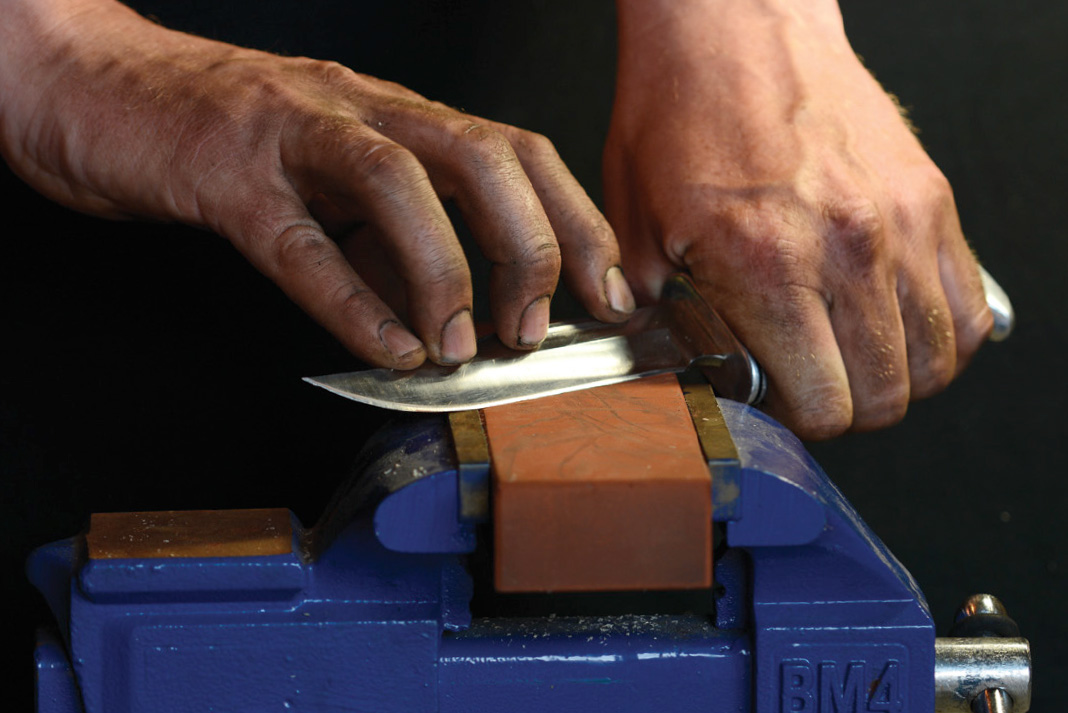
Repeat the motion 10 times on the same side. Then repeat 10 strokes on the other side. Depending on how dull your blade is, you may need to repeat this pattern several times.
A medium grit stone will leave micro-serrations in the steel that give it more edge surface and bite, perfect for performing general camp chores.
For whittling, skinning or shaving a beard, you’ll need to progress to a finer stone. Repeating the procedure with a fine stone will remove the micro-serrations left by the medium grit stone.
Finally, to polish the new edge of your blade, stroke the edge down a piece of scrap leather a dozen times.
The best way to test your handiwork is to hold up a sheet of paper and drag the knife across its edge. A sharp knife will slice the paper effortlessly. —Wolf Starchild
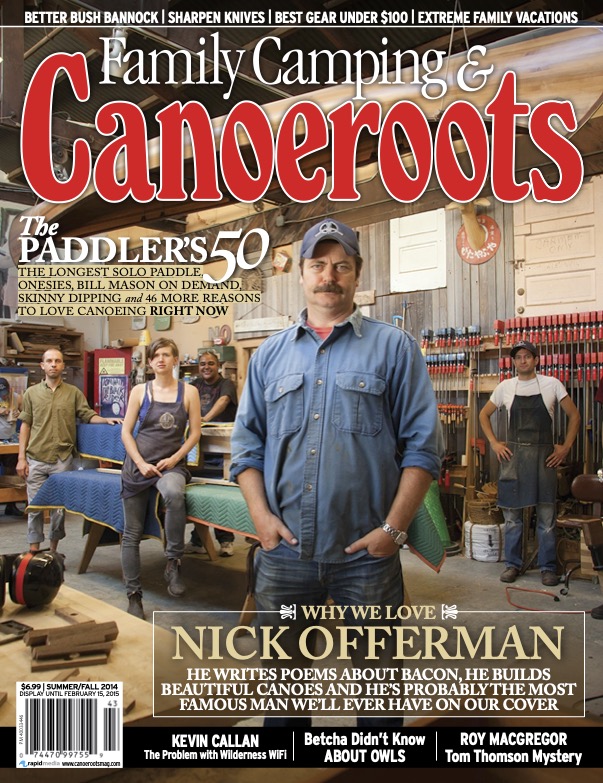 Get the full article in the digital edition of Canoeroots and Family Camping, Summer/Fall 2014.Subscribe to Paddling Magazine’s print and digital editions, or browse the archives.
Get the full article in the digital edition of Canoeroots and Family Camping, Summer/Fall 2014.Subscribe to Paddling Magazine’s print and digital editions, or browse the archives.
Paddling To Help Kids Go WILD
“Knowing the importance of today’s youth in shaping the future, I am proud to announce the beginning of W.I.L.D. – Wilderness Immersion for Leadership and Discoveries,” said photographer Daniel Fox. “Its aim is to give youth, especially under-privileged teens, the opportunity to experience first-hand the positive impact nature can have on their lives. The goal is to motivate them to explore and discover the natural world and understand how experiencing the beauty and challenges inherent in nature can lead to enhancing their self-confidence and developing valuable leadership skills
Our wish is to have their testimonials and experiences reach and positively impact other teens and their families and inspire them to Experience the W.I.L.D.
For my first W.I.L.D. campaign, I will raise the necessary funds to send a small group of under privileged teens to a 30-day Sea Kayaking camp in Alaska in the summer of 2015. The wilderness immersion camp will be given by the internationally known and extremely well reputed National Outdoors Leadership School (N.O.L.S.).
Launching in the third week of August, I will paddle from Victoria on Vancouver Island to San Francisco, a journey of 1,000 miles. The 2 1/2 month paddle will be at the core of a Indiegogo campaign. Click here – INREACH tracking & FACEBOOK, to follow this amazing journey!
Find out more about how you can contribute and the wonderful rewards you can get. These teens will be changed forever, transformed and more deeply connected with the planet. Lets make this happen!
“The most rewarding part of this course was getting out of my element, and experiencing nature at its fullest.” Thomas W. Southeast Alaska NOLS Sea Kayaking Grad
STOP . BREATHE . RELAX . LISTEN – The Power of Nature to Restore the Human Spirit is the foundation of my narrative and the message behind my work.”
Gear Review: Vipukirves Lever Axe
What the Lever Axe lacks in beauty it makes up for in strength and power—this axe will have you winning Strongman competitions in no time. The revolutionary redesign comes from Heikki Kärnä in Finland. The widened blade creates a lever effect, forcing the wood to split, and keeps the axe blade from getting stuck. We were impressed with its efficiency. The Lever Axe is no lightweight—at four pounds it’s only appropriate for base campers and your cottage’s wood lot.
www.vipukirves.fi | $260
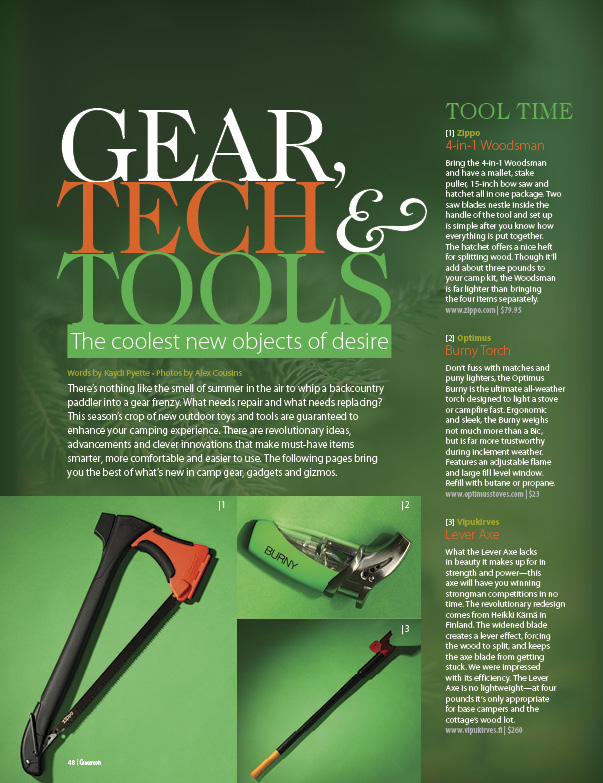 Get the full article in the digital edition of Canoeroots and Family Camping, Early Summer 2014, on our free iPad/iPhone/iPod Touch App or Android App or read it on your desktop here.
Get the full article in the digital edition of Canoeroots and Family Camping, Early Summer 2014, on our free iPad/iPhone/iPod Touch App or Android App or read it on your desktop here.
World-Traveling Bloggers On Living Their Dream
In the last six years, Dave and Deb have been to more than 80 countries—they laugh in disbelief at having lost track of the precise number. The full-time travelers are the founders of The Planet D, an adventure travel blog with almost 78,000 Facebook fans and just as many followers on Twitter. Their website—true to the slogan “Adventure is for Everyone”—is a resource for any potential traveller; young, old, well-travelled, first-time flyers, avid outdoor people or play-it-safe sightseers.
All but bursting with enthusiasm, the pair has the exact exuberance you’d expect from two people who are living their dream. Rapid caught up with Dave and Deb at the Madawaska Kanu Centre in the whitewater wonderland of Ontario’s Ottawa Valley, where they finished each other’s sentences as they gushed about how they make a living doing what they love.
How did you become world-traveling bloggers?
We knew we wanted to travel so we worked really hard to save money. For years we would save up, travel for a few months then go back to work again but we knew this was what we wanted to do full-time. Eventually we saved up as much as we could and quit our jobs for good. We couldn’t go half way. We saved enough to have a starting point, but ran out of money pretty quickly so for a while we just had to figure it out as we went to make a bit of money here and there.
How do you make a living from it?
At first we sold ads on our website because it was the only way we knew how, but that was before we’d really built our brand. Now we make our money through partnerships and sponsorships, and we really had to build our website and put ourselves out there to make it happen. We’re American Express Ambassadors, Expedia Viewfinders, HouseTrip Diplomats—we have all these different names. We’re brand ambassadors, and we regularly work with tourist boards.
Lots of our readers would love to be living the dream like you are but have other commitments that get in the way—what advice would you give them?
If you know what you want and step out of your comfort zone to try to make it happen, doors will open, but it’s not going to work if you just go with the wind. Have a plan to get to where you want to be, and be willing to modify and mold that plan. You have to be flexible and work really hard. We thought the website would be a good way to keep travelling but when we were building it, it was like having two full time jobs—we worked our normal jobs all day then worked on the website at night for a year.
You’ve been skydiving in New Zealand, ice climbing in the rockies, and cage diving with sharks in South Africa—how does whitewater stand out from all your other adventures?
There’s something about doing the Ottawa River that feels like a rite of passage—it is the big river of the world. We’re both from Ontario and have travelled all over to find adventure, so being back here is amazing. We keep thinking ‘I didn’t know you could do that in Ontario.’
This interview has been abbreviated for publication.
VIDEO: Elie Kayaks’s Latest
Vincent Bedard shows us a few of the new kayaks in the Elie lineup at the Outdoor Retailer 2014 show. With awesome colours, design and features Elie will have a boat for your paddling needs. Watch it now.




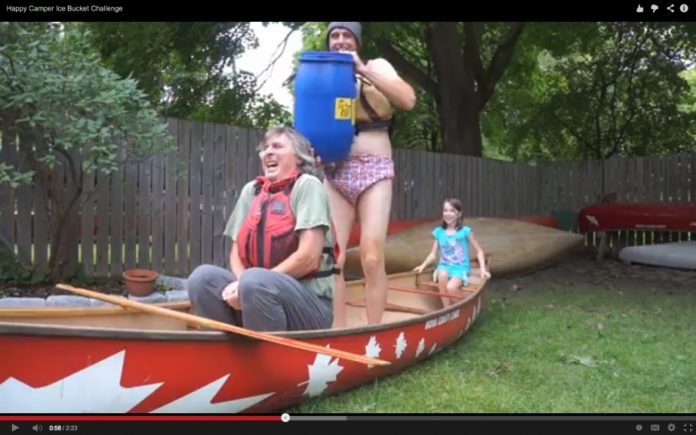




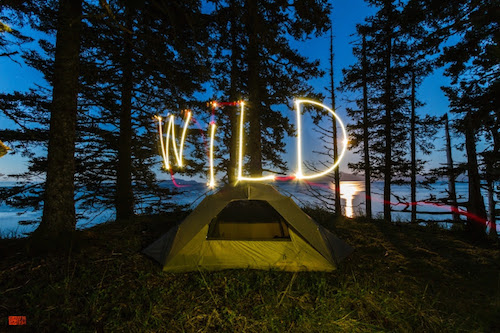
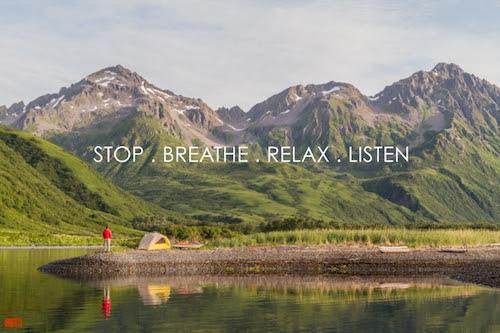

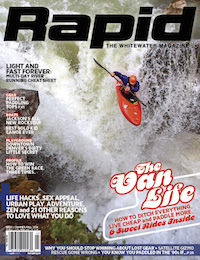 This article first appeared in the Summer/Fall 2014 issue of Rapid Magazine.
This article first appeared in the Summer/Fall 2014 issue of Rapid Magazine. 

